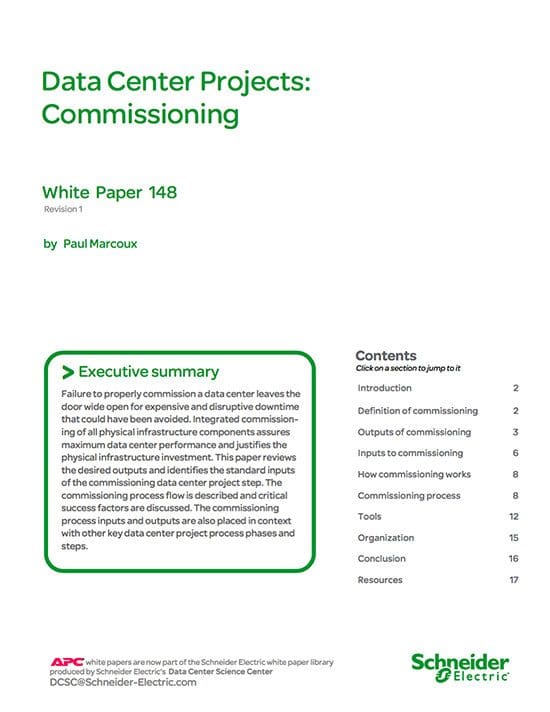Data Center Commissioning
When building a new data center, the owner of the data center has no guarantee that the various physical infrastructure subsystems – power, cooling, fire suppression, security, and management – will work together.

Commissioning is the process that reviews and tests the data center’s physical infrastructure design as a holistic system in order to assure the highest level of reliability.
Traditional commissioning is a daunting task. Since formal system operation doesn’t begin until the system is commissioned, the commissioning team experiences intense pressure to complete the commissioning process quickly.
For these reasons data center commissioning has almost uniquely been associated with large data centers (over 20,000 ft2 or 1,858 m2). In the recent past, many data center managers chose to roll the dice and perform little or no commissioning, relying only on start-up data to press ahead with launching the new data center.

Given the reality of 24×7 operations, however, the alternative of exposure to major system failures and accompanying downtime is no longer an economically viable option. Commissioning has now become a business necessity.
Placed in the context of an entire data center design / build project, the commissioning step is part of the implementation phase (see Figure 1). Within the implementation phase, commissioning comes after the physical infrastructure systems have been delivered, assembled, installed, and individually started up. Once commissioning is complete, formal orientation and training of data center staff can begin.
Never forget that valuable knowledge gained from the commissioning exercise should be documented!
| Title: | Guidelines To Data Center Commissioning // White Paper 148 APC by Schneider Electric |
| Format: | |
| Size: | 1.00 MB |
| Pages: | 17 |
| Download: | Right here | Video Courses | Membership | Download Updates |


